Reconstitution of the very short patch repair pathway from Escherichia coli
- PMID: 22846989
- PMCID: PMC3463329
- DOI: 10.1074/jbc.M112.384321
Reconstitution of the very short patch repair pathway from Escherichia coli
Abstract
The Escherichia coli very short patch (VSP) repair pathway corrects thymidine-guanine mismatches that result from spontaneous hydrolytic deamination damage of 5-methyl cytosine. The VSP repair pathway requires the Vsr endonuclease, DNA polymerase I, a DNA ligase, MutS, and MutL to function at peak efficiency. The biochemical roles of most of these proteins in the VSP repair pathway have been studied extensively. However, these proteins have not been studied together in the context of VSP repair in an in vitro system. Using purified components of the VSP repair system in a reconstitution reaction, we have begun to develop an understanding of the role played by each of these proteins in the VSP repair pathway and have gained insights into their interactions. In this report we demonstrate an in vitro reconstitution of the VSP repair pathway using a plasmid DNA substrate. Surprisingly, the repair track length can be modulated by the concentration of DNA ligase. We propose roles for MutL and MutS in coordination of this repair pathway.
Figures
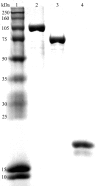
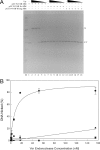
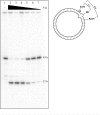
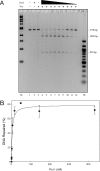

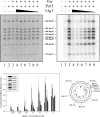
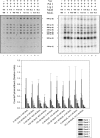
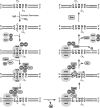
Similar articles
-
Activity of Vsr endonucleases encoded by Neisseria gonorrhoeae FA1090 is influenced by MutL and MutS proteins.BMC Microbiol. 2018 Aug 30;18(1):95. doi: 10.1186/s12866-018-1243-3. BMC Microbiol. 2018. PMID: 30165819 Free PMC article.
-
Interaction of MutS and Vsr: some dominant-negative mutS mutations that disable methyladenine-directed mismatch repair are active in very-short-patch repair.J Bacteriol. 2001 Nov;183(21):6487-90. doi: 10.1128/JB.183.21.6487-6490.2001. J Bacteriol. 2001. PMID: 11591694 Free PMC article.
-
Physical and functional interactions between Escherichia coli MutL and the Vsr repair endonuclease.Nucleic Acids Res. 2009 Jul;37(13):4453-63. doi: 10.1093/nar/gkp380. Epub 2009 May 27. Nucleic Acids Res. 2009. PMID: 19474347 Free PMC article.
-
Cooperation and competition in mismatch repair: very short-patch repair and methyl-directed mismatch repair in Escherichia coli.Mol Microbiol. 2002 Jun;44(6):1421-8. doi: 10.1046/j.1365-2958.2002.02989.x. Mol Microbiol. 2002. PMID: 12067333 Review.
-
Structure and function of mismatch repair proteins.Mutat Res. 2000 Aug 30;460(3-4):245-56. doi: 10.1016/s0921-8777(00)00030-6. Mutat Res. 2000. PMID: 10946232 Review.
Cited by
-
Redundancy in ribonucleotide excision repair: Competition, compensation, and cooperation.DNA Repair (Amst). 2015 May;29:74-82. doi: 10.1016/j.dnarep.2015.02.008. Epub 2015 Feb 16. DNA Repair (Amst). 2015. PMID: 25753809 Free PMC article. Review.
-
Endonuclease-independent DNA mismatch repair processes on the lagging strand.DNA Repair (Amst). 2018 Aug;68:41-49. doi: 10.1016/j.dnarep.2018.06.002. Epub 2018 Jun 12. DNA Repair (Amst). 2018. PMID: 29929046 Free PMC article.
-
Escherichia coli DNA replication: the old model organism still holds many surprises.FEMS Microbiol Rev. 2024 Jun 20;48(4):fuae018. doi: 10.1093/femsre/fuae018. FEMS Microbiol Rev. 2024. PMID: 38982189 Free PMC article. Review.
-
DNA repair in Mycoplasma gallisepticum.BMC Genomics. 2013 Oct 23;14:726. doi: 10.1186/1471-2164-14-726. BMC Genomics. 2013. PMID: 24148612 Free PMC article.
-
Atomic force microscopy captures the initiation of methyl-directed DNA mismatch repair.DNA Repair (Amst). 2015 Nov;35:71-84. doi: 10.1016/j.dnarep.2015.08.006. Epub 2015 Sep 21. DNA Repair (Amst). 2015. PMID: 26466357 Free PMC article.
References
-
- Harfe B. D., Jinks-Robertson S. (2000) DNA mismatch repair and genetic instability. Annu. Rev. Genet. 34, 359–399 - PubMed
-
- Iyer R. R., Pluciennik A., Burdett V., Modrich P. L. (2006) DNA mismatch repair. Functions and mechanisms. Chem. Rev. 106, 302–323 - PubMed
-
- Jiricny J. (2006) The multifaceted mismatch-repair system. Nat. Rev. Mol. Cell Biol. 7, 335–346 - PubMed
-
- Schofield M. J., Hsieh P. (2003) DNA mismatch repair. Molecular mechanisms and biological function. Annu. Rev. Microbiol. 57, 579–608 - PubMed
-
- Kunkel T. A., Erie D. A. (2005) DNA mismatch repair. Annu. Rev. Biochem. 74, 681–710 - PubMed
Publication types
MeSH terms
Substances
Grants and funding
LinkOut - more resources
Full Text Sources
Molecular Biology Databases

